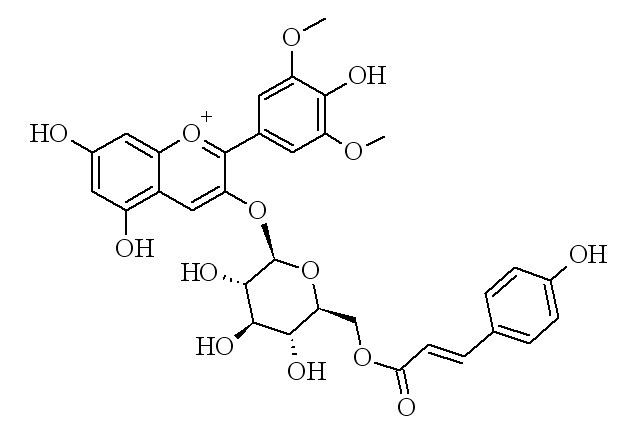 | ||
p-Coumaroylated anthocyanins are a type of anthocyanins with a p-coumaric acid unit linked with a sugar to an anthocyanidin aglycone. 3-(6-p-Coumaroyl)glucosides are found in grape and wine. Cyanidin-3-O-(di-p-coumarylglucoside)-5-glucoside is found in dark opal basil. Red leaves of Perilla frutescens also accumulate cyanidin 3-(6-O-p-coumaroyl-β- D-glucoside)-5-(6-O-malonyl-β-D-glucoside).
Delphinidin 3-(6-p-coumaroyl)glucoside is formed by the enzyme anthocyanin 3-O-glucoside 6''-O-hydroxycinnamoyltransferase from delphinidin 3-O-glucoside and p-coumaroyl-CoA in the anthocyanin biosynthesis pathway.
Red-berries vines of the Pinot varieties are known to not synthesize acetylated or para-coumaroylated anthocyanins, as other grape varietals do, only glucosylated anthocyanins.
Anthocyanin 5-aromatic acyltransferase is an enzyme that uses hydroxycinnamoyl-CoA and anthocyanidin-3,5-diglucoside to produce CoA and anthocyanidin 3-glucoside-5-hydroxycinnamoylglucoside. This enzyme can be found in Gentiana triflora.
